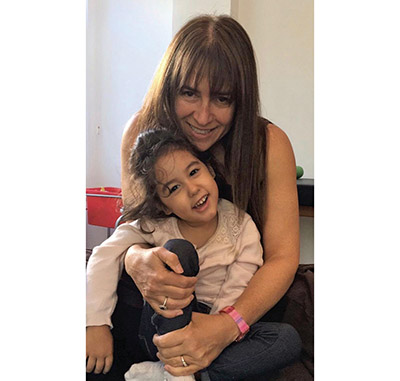
Why is that infant or toddler wearing a football helmet? How many times have you seen a baby stroll by with a pink or light blue helmet on her or his head? No, they’re not practicing to become a linebacker for the Giants! They probably have plagiocephaly, a fancy name for flatness on one side of the head. It generally occurs as a result of in-utero crowding and/or infantile torticollis.
Torticollis means “twisted neck” in Greek, a pediatric issue that has become diffuse in the last 25 years, as a result of the “Back to Sleep” campaign. This sleeping approach on the back began in 1992, when the American Pediatric Association recommended that infants sleep supine (on their backs). The purpose was to prevent SIDS, Sudden Infant Death Syndrome. In the past, moms put newborns on their bellies because they slept more soundly. In 1992 they determined that a leading cause of SIDs was prone sleeping. SIDS has decreased by 50 percent, but unknown at the time was that so many infants would develop both plagiocephaly and torticollis from lying for protracted amounts of time on just one side of their skull. The posterior plates deform to a slight flattening. This in turn encourages the head to roll towards the flattened side and the baby’s neck to turn one way.
When parents go to their pediatricians with their babies who favor one side, many pediatricians tell them simply, “He’ll probably grow out of it.” But if the condition is left untreated, the entire spine can become twisted, causing scoliosis. You don’t want to take the chance that it won’t resolve on its own. The longer you wait to treat, the harder it can be to fix. Also, older babies, after 7 months can develop “stranger anxiety” and can resist the treatment. It doesn’t mean you don’t work with them, it is simply more challenging. More often babies need some treatments with a trained pediatric physical or occupational therapist that can work gently on their entire body to help re-orient them to look to the side that they cannot. Parents should be empowered with a full home program that is easy to execute in all of the baby’s activities—eating, nursing, changing diapers, playing and sleeping.
If your baby always keeps his ear towards one side and only wants to look either to the right or left, no matter where you put him, there is a good chance he has torticollis. Here is what you need to know about helping your baby:
- 1. Consult your pediatrician. If the doctor says to wait and see, insist that you want to have an evaluation with a skilled pediatric physical or occupational therapist.
- 2. Make sure that the person treating the baby is a pediatric therapist; they mostly work with infants and toddlers. This is a specialty, and the skills needed to give physical therapy to an adult are completely different from those needed for a newborn, infant or toddler.
- 3. Never allow any practitioner to “force” the baby into a position. Forceful stretching or positioning actually exacerbates the condition, making the baby’s head and neck ricochet back to the original position and sometimes worse.
- 4. Don’t simply “force” the infant into “tummy time.” Infants should be at eye level with their families. Maybe have the baby on a bed and you sit on the floor next to them. You can also place the baby on your chest looking up and you, and you lie down on your back, slightly elevated.
- 5. If the baby always drops the head to the right ear, make sure that when he is on his belly he is positioned not to drop the head towards the right. This makes it worse!
- 6. Oh, and if it wasn’t clear, have a consultation with a trained pediatric therapist to determine the type and extent of the torticollis!
By Nancy Neiditz
Nancy Neiditz, PT, created the “Torticollis, a Gentler Approach” method and has been a practicing physical therapist since 1989, as well as a Feldenkrais Practitioner® and an Anat Baniel Method Practitioner for Children™. Nancy has a private practice in Demarest and draws on her dance, yoga and Pilates background in her work. For more information, please visit her website at http://nancypt4kids.com/.










